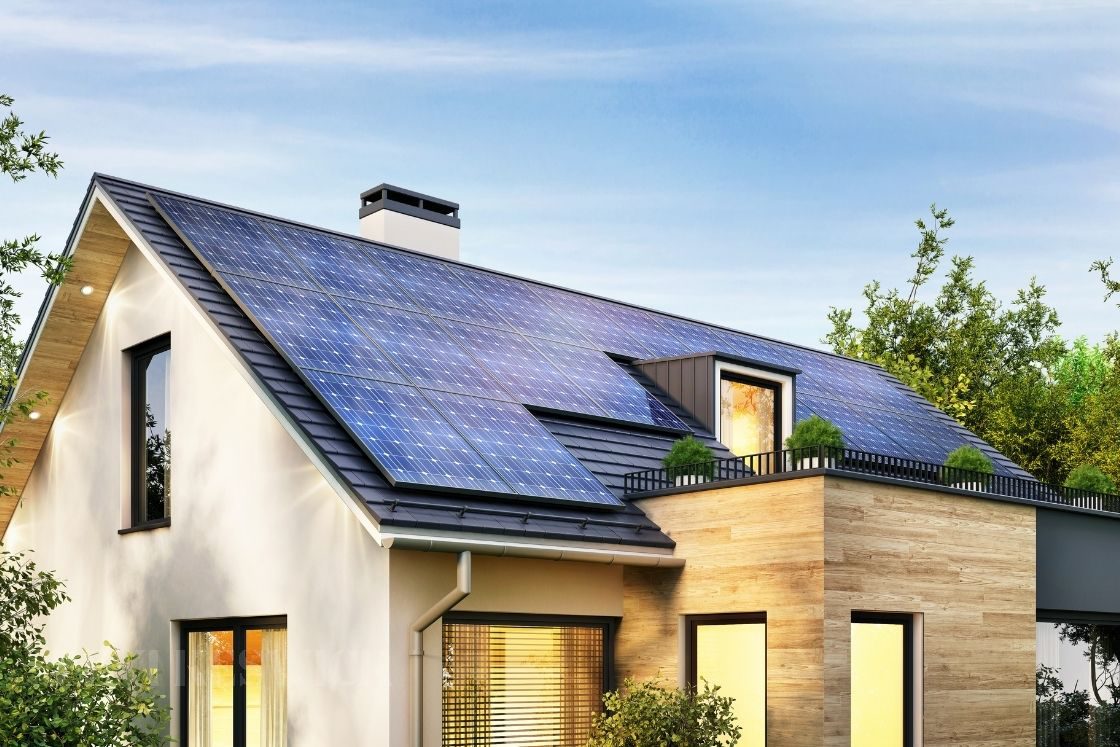Maybe you’ve heard about all the good solar panels can do for the earth (and your energy bill), or maybe you’re just curious if your roof would work well with them. Either way, we’ve compiled a list of essential factors to consider when getting into solar power, including which roofing materials are compatible with solar panels.
Shape, Size, and Orientation
Before we talk about materials, we should discuss other important elements that make your roof more or less optimal for solar panels. As far as size and shape go, the perfect roof for solar power is large and square, with at least 300 feet of surface area. Different shapes can also work, but talk to a solar contractor to ensure your roof qualifies.
Finally, orientation is critical to consider because it factors into how much sunlight will hit your roof. Here in the northern hemisphere, solar panels are most effective when facing true south. Check out a website with a satellite view like Google Maps to figure out how your roof is oriented.
Materials
Good news! You can install solar panels on almost every type of roof. The options we discuss will look at the ideal material, but all of them can work.
Metal
If your metal roof comes with standing seams, you won’t need to drill to attach solar panels. This reduces the cost of labor and, thus, your total bill.
Tile
The cost of installation on a tile roof will, however, be more expensive. To properly attach solar panels, the technicians will need to remove some tiles to prevent breakage. That said, clay, slate, or concrete tile roofs are still good candidates!
Asphalt Shingles
The most common roofing materials are asphalt shingles, and they’re the optimal materials for solar panel installation. With some quick studs drilled into your roof, your solar panels can get installed in no time.
Tar and Gravel
Most tar and gravel roofs are flat, and most experts recommend installing solar panels at a 30-degree angle. Have no fear; with extra hardware, you can have your solar panels attached to your roof at that prime angle.
Now that you know which roofing materials are compatible with solar panels, learn more about why homeowners should transition to solar power and join the growing number of energy-conscious households in the US.








